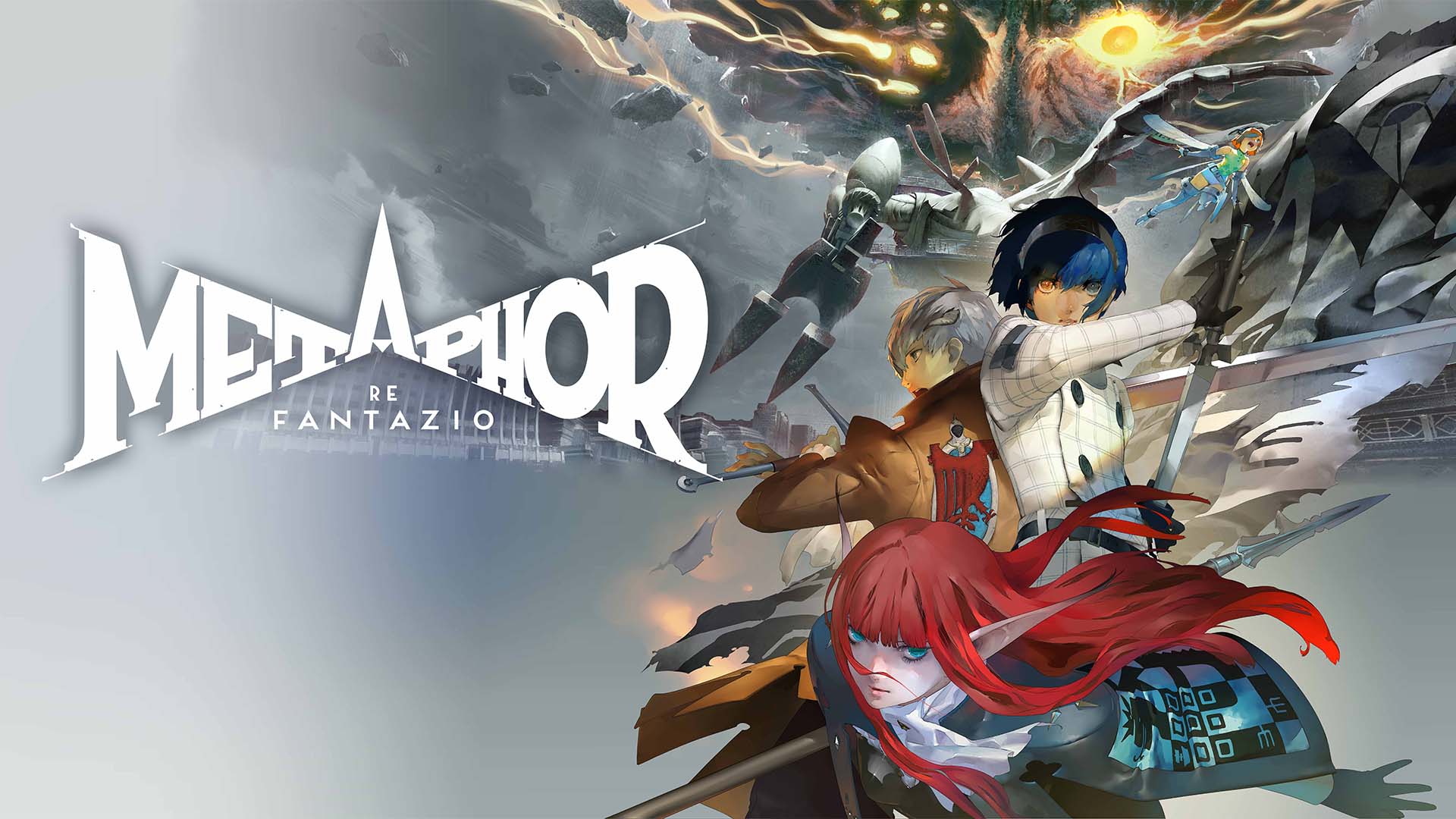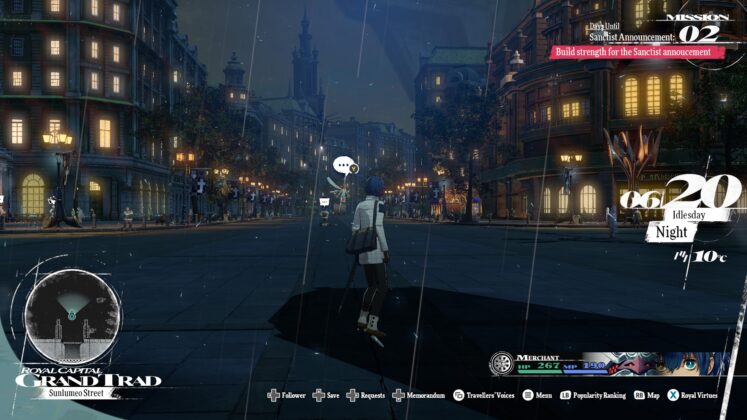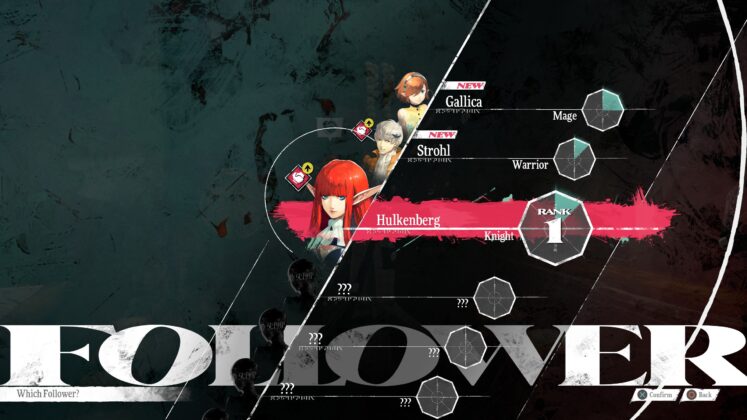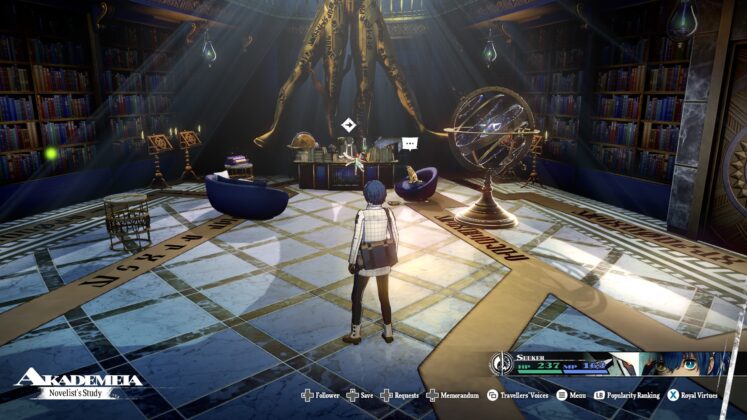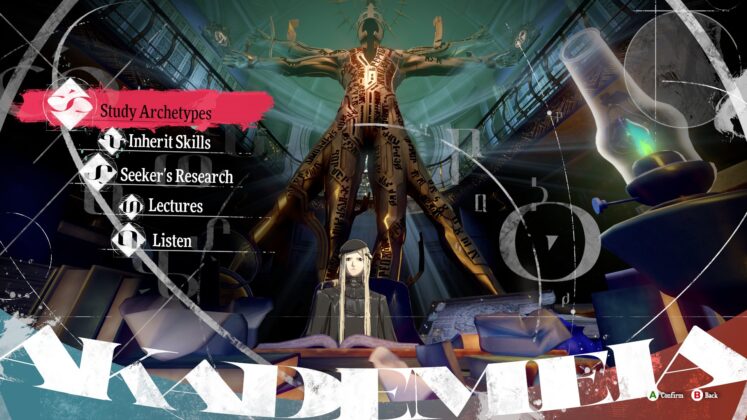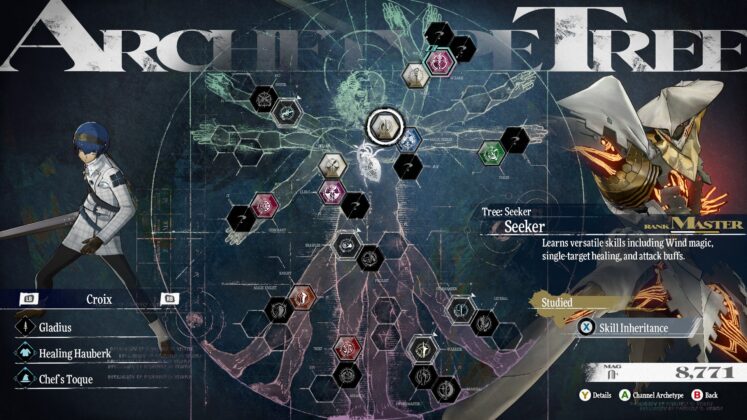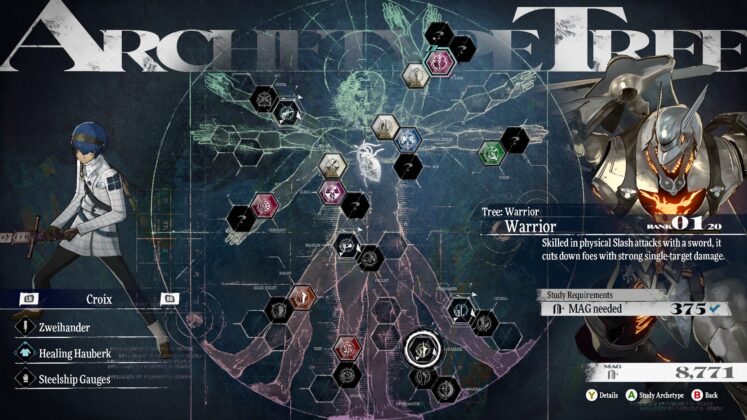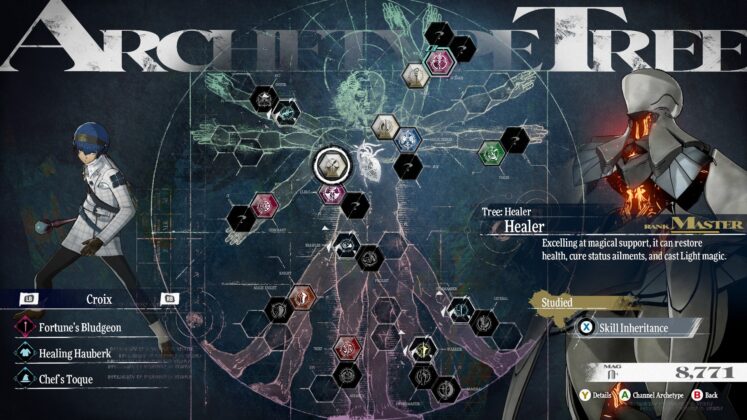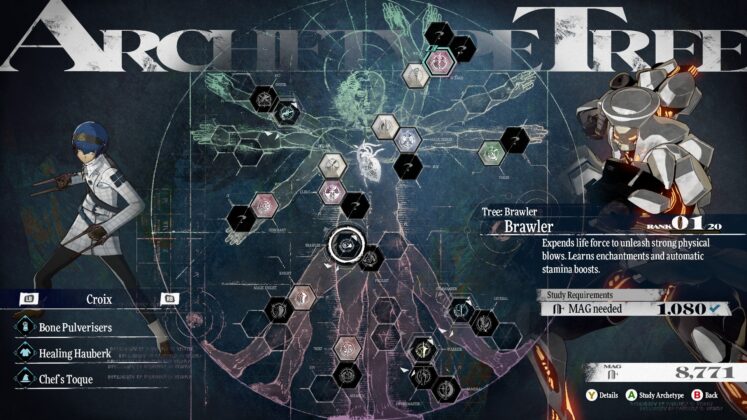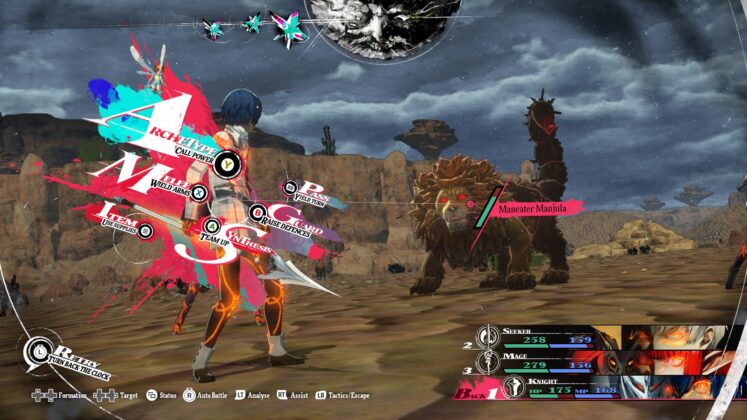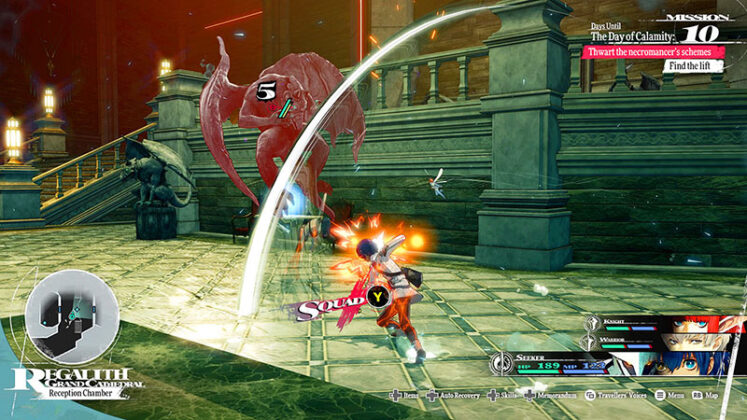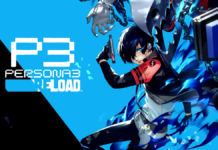A Familiar, Yet New Experience.
As I was playing the first five hours of the game, I was somewhat skeptical of the approach Metaphor is taking for its core gameplay loop; it essentially is, for the better or for worse, the same time management system you encounter in the Persona series. You play on a day-to-day schedule while working towards finishing your main goal for the current story arc, usually on a deadline to finish the dungeon you’re currently in. This system is really familiar to me because I have played multiple Persona games multiple times over the years, but coming in, I was expecting something new from Katsura Hashino and the team from Studio Zero. I wasn’t here to play Persona again, after just finishing Persona 3 Reload a few months back. Not to mention, you can draw some comparisons between this game and Persona‘s mechanics: Archetypes, the power the protagonist and his friend unlocked have a striking resemblance to Persona designs. The ‘Royal Virtues’ are the protagonist’s social stats in Persona, Akademeia is basically Velvet Room (it has the colours typical for a Velvet Room, even), and Followers are your Social Links or Confidants, and so on, and so forth.
As I played more and more through the game, my skepticism gradually faded. While on the surface the gameplay loop is somewhat similar to Persona games, the details and the context applied to the system itself make up all of the differences. You raise your social stats in Metaphor by listening to lectures about other tribes’ cultures, for example, which is contextualized as the protagonist improving his qualities to be a king and learning about the world alongside us. The day-to-day gameplay loop works a bit differently too, because as you progress more into the game, there are times when you receive quests that require you to travel to different areas of the kingdom, which would take a few days to reach. You have to take these trips into account while managing your time in Metaphor because if you’re not careful, you might miss the deadline for the main mission itself. There’s a feeling of adventure as you explore the kingdom because of this system, which is unlike the Persona series’ usual setting being limited in a single town in Japan. While the underlying gameplay mechanics are more or less the same, the setting and context where they are used give Metaphor its own unique feeling separating itself from Persona.
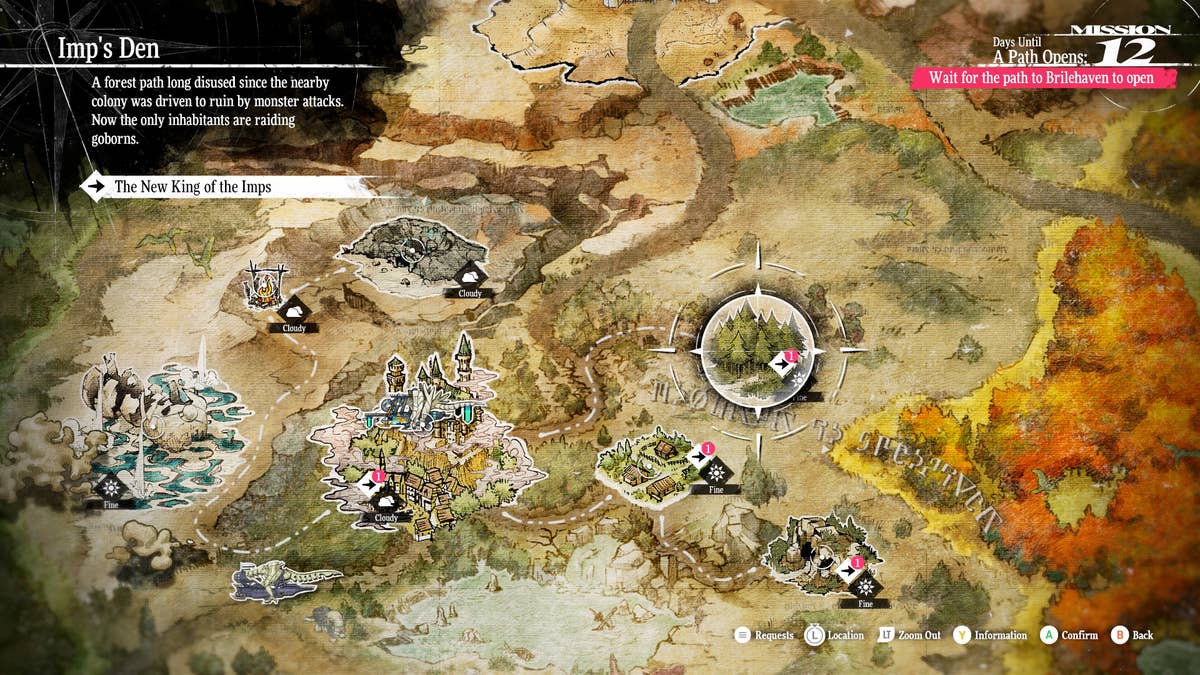
Archetypes, the ‘Persona’ of this game, are way more akin to the classic job or class types that are typically found in RPGs. You have your Warriors, Knights, Mages, Healers, Thieves, Brawlers and so on. Each party member can unlock every Archetype you have in your arsenal, and while each Archetypes have to be unlocked and leveled up separately for each character, fortunately Atlus implements a system where you can “stack” your experience points on an Archetype you have mastered, which gives you an item that grants experience point to any Archetype you want on every subsequent rank ups. The ability to customize your party in any way you want makes this game really flexible, but you do have to think a little bit about how each Archetypes’ skills will align with their stats to properly utilize each character’s full potential. This makes the game more focused on party building than Persona ever does, and you’re encouraged to experiment and test different party setups against specific bosses.
While gaining Followers is the main way for the player to unlock new Archetypes and other gameplay bonuses, the way Followers work is also a little bit different from how Social Links/Confidants work. There are no invisible points you need to track, and the game will notify you when a Follower is ready to progress to the next Rank. Instead of giving you points to rank up, the game gives you Magla, the secondary currency of the game used to upgrade Archetypes, when you pick the correct choices during the Follower’s story. The only way they gate you from ranking up Followers is your social stats, which you can focus on instead if you don’t have anyone who can rank up during the day.
The Culmination of Atlus History.
Metaphor‘s combat might be the best combat system that Atlus has made by far. At the same time, it can only be this good exactly because of the different iterations of combat systems Atlus has made, as Metaphor has beautifully incorporated the best aspects of those combat systems they’ve made during their lifetime.
At the base of it, Metaphor utilizes the Press Turn system commonly found in Shin Megami Tensei games ever since the release of Shin Megami Tensei III for its turn-based battle system. Every turn, you have a “turn icon” for every member of your party. Using attacks will consume one turn icon, but using attacks that exploit the enemies’ weaknesses will consume half of a turn icon instead, making the icon flash on the UI, and essentially extending your turn. Party members can now move between front and back rows freely during their turn, where being in the back row increases your defense but decreases the damage of melee attacks. This system is reminiscent of how Etrian Odyssey‘s party system works, and I love how they implemented it here on top of the Press Turn system, adding more depth to it. Another mechanic Atlus brought back from an older game came in the form of Synthesis skills, which is reminiscent of Digital Devil Saga‘s Combo skills, where two party members can perform stronger attacks together at the expense of using more turn icons. The combination of multiple gameplay mechanics from throughout Atlus history makes Metaphor‘s combat the best it has ever been for an Atlus game, and I really love it.
A mechanic that is entirely new to Atlus games in Metaphor is its usage of real-time combat during dungeon exploration before going into turn-based combat. This system has been used in Trails through Daybreak by Nihon Falcom before, but I quite like Metaphor‘s approach to it—enemies below your level will take only one hit to kill, while enemies that are equal or above your level will need a little bit of hitting before you can stun them and go into turn-based combat. This makes dungeon exploration feels smooth as you blast through weaker enemies but also provides a huge challenge against stronger enemies because they will hit and ambush you if you are not careful. Another small thing I liked is that before going into a dungeon, you can buy information about the enemies and bosses inside the dungeon from informants in towns. These typically don’t spoil the dungeons completely as the information they give you isn’t complete, but it’s a nice way to give players the option to be prepared before going into a dungeon.
Currently, I am playing on the Hard difficulty, and the game does feel like a proper challenge. Enemies typically have one extra turn icon on every encounter, and failing to dodge enemies’ attacks during the real-time combat segments will usually lead to death if you’re not careful. Boss designs are really neat too, as they will force you to think about your party lineup and approach to combat; some bosses will be harder if you use specific Archetypes, for example, and there are times when you have to think about if you want to kill the boss itself or the mobs it summons. The archetype system also gives you quite a lot of options in strategizing for a fight, whether you prefer having a party with two Mages to exploit enemies’ elemental weaknesses, using a Healer archetype to heal, or even try and tank damage coming from the enemy using the Knight archetype, the game gives you complete freedom to test out builds that are appropriate for the encounter. It’s a true team-building game because of it, and it’s really fun to test out different loadouts.
Next page: art and conclusion

